The HTC One M9 Review: Part 1
by Joshua Ho on March 22, 2015 7:00 PM EST- Posted in
- Smartphones
- HTC
- Qualcomm
- Mobile
- Snapdragon 810
- One M9
GPU Performance
Although CPU is often the focus of any given SoC, it’s important to avoid using a weak GPU as even cases as simple as web browsing or navigating through a UI can rely on the GPU for rendering, in addition to the common use cases of gaming. It’s also possible that GPUs can be leveraged for compute, which has great use for cases like image and video processing. To this end, the Snapdragon 810 has an Adreno 430 GPU that runs at 600 MHz, similar to the Snapdragon 805’s Adreno 420. As a result, all of the improvements we’re seeing from the Adreno 420 to the Adreno 430 are solely the result of architecture and driver improvements rather than clock speed increases.
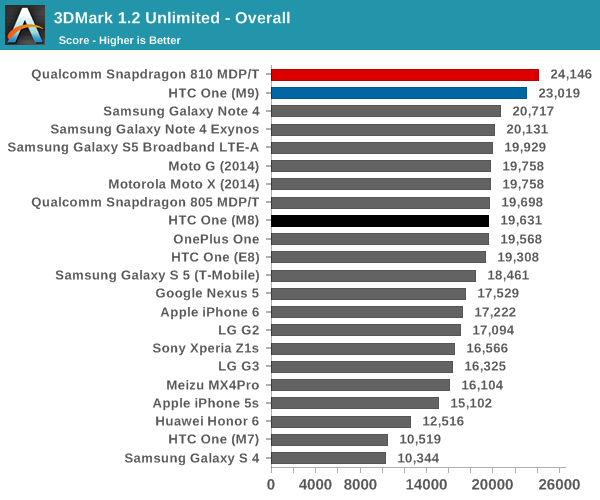

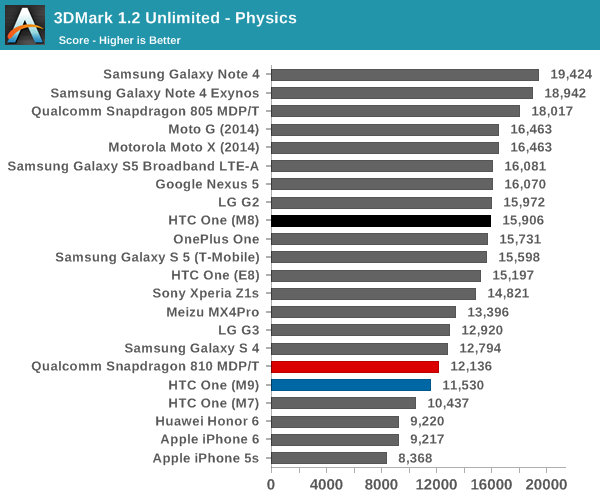
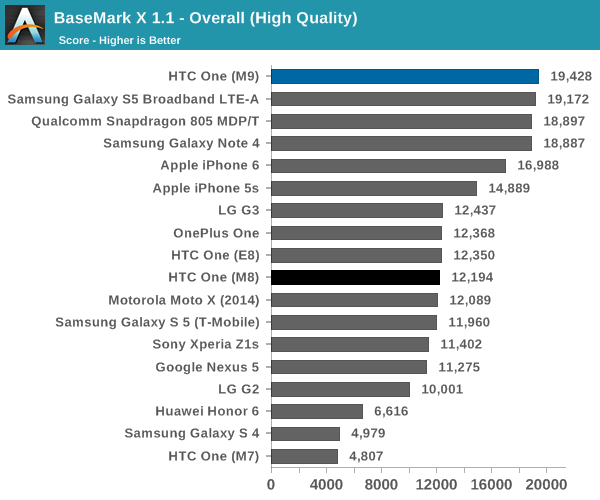
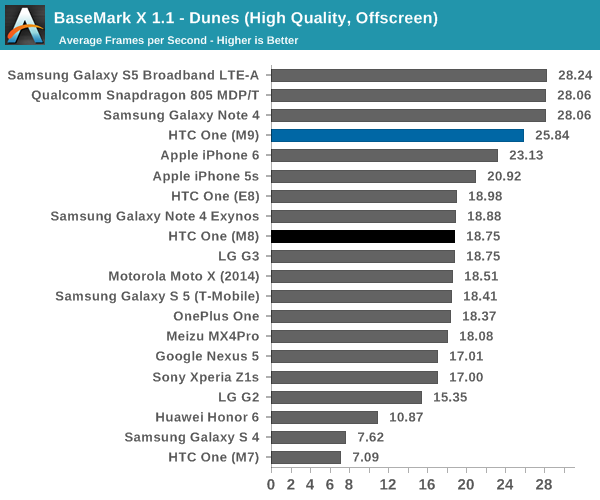
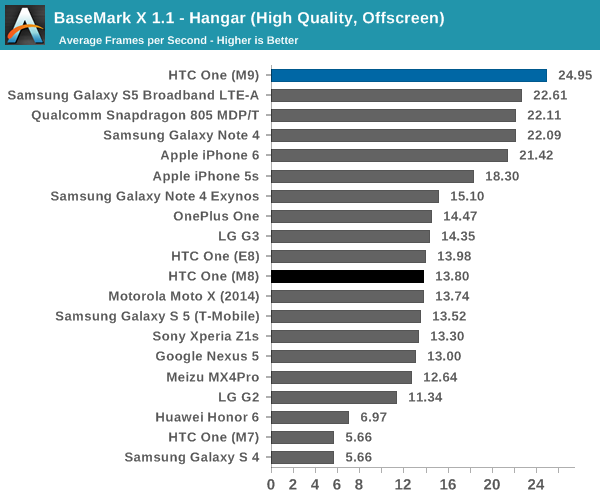

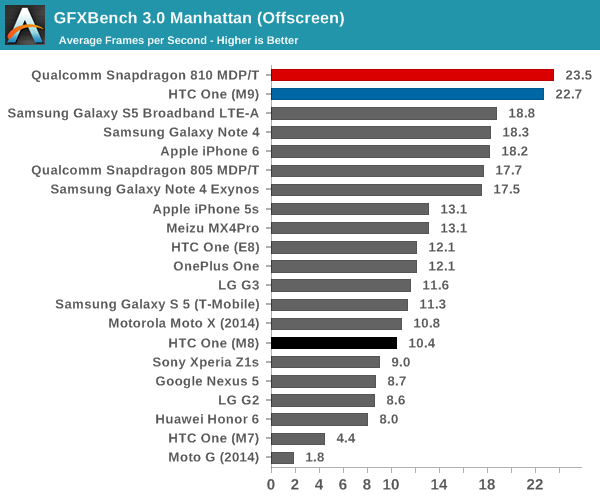
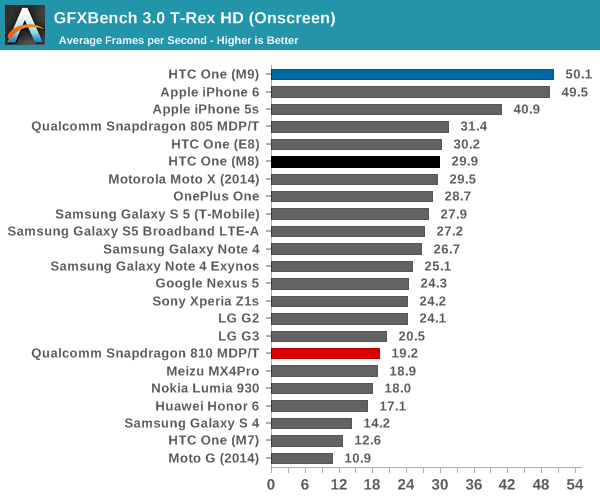
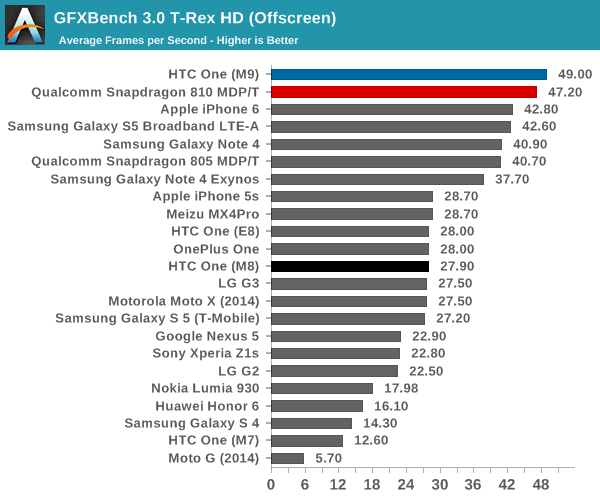
As one can see, the One M9 manages to deliver results that basically mirror what we saw with Qualcomm’s MDP/T, although there is some variance that can be seen. HTC did make the right call here with the 1080p display as we see a pretty massive jump in performance from the One M8 to the One M9 in GPU performance, and using a 1440p display would have eaten away most of these gains. I suspect that the hit to GPU performance with 1440p displays will be mostly compensated for by the next generation of SoCs, but for now I’m still not sure that it makes sense to push such a resolution on a phone.
NAND Performance
Storage performance is often an unnoticed aspect of any device, but it can often force itself to the foreground when it’s insufficient. Probably the most famous case of this is the Nexus 7 (2012), which was really the first device that caused people to start to look closer at NAND performance. While we’re close to a better solution for storage testing, for now we can still look at Androbench to get a decent idea of relative storage performance, although this is nowhere near as extensive as our SSD testing.
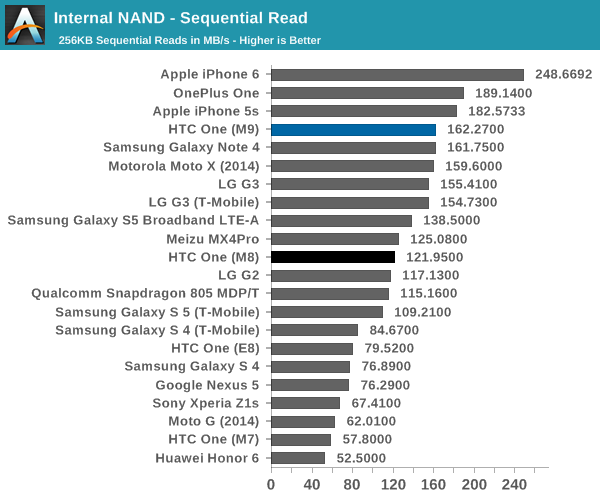
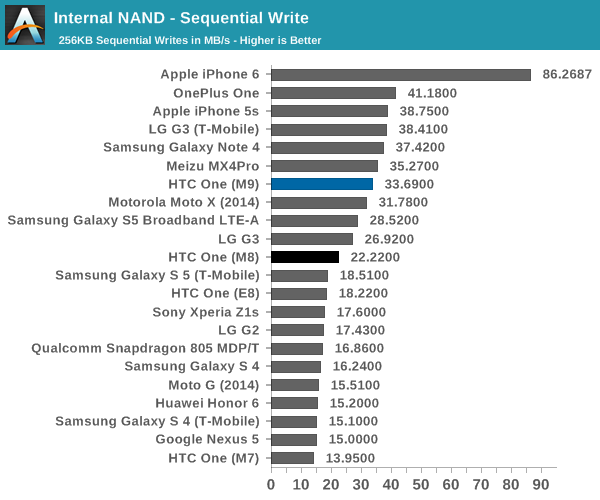
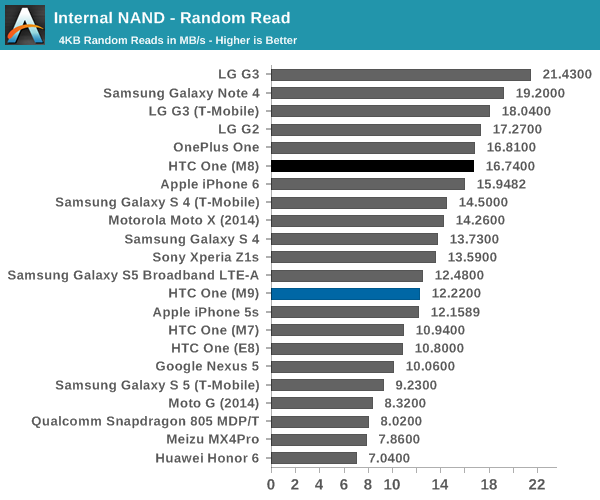
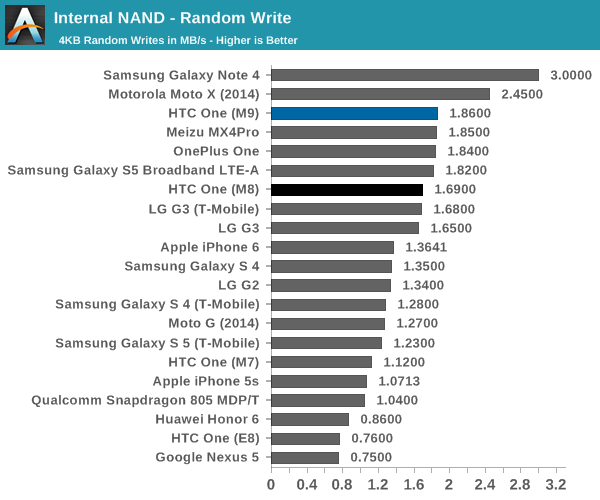
In this test, HTC does show some level of improvement over the previous generation but does regress a bit in the random read department. As far as I can tell, HTC is using Samsung’s eMMC solution here, with the model name BGND3R, as opposed to the One M8 which used a SanDisk eMMC IC. It's interesting to see how the One M9 still uses ext4 here, even though the Nexus 9 adopted F2FS. As far as I can tell, there seems to be a reason to adopting one filesystem over another but this reason is still unclear to me.










132 Comments
View All Comments
testbug00 - Monday, March 23, 2015 - link
Eh, it works like any CPU in it's approx power draw range would in a phone.Konservenknilch - Monday, March 23, 2015 - link
I used to be an HTC fanboy, and I think the M8/M9 are awesome phones. However, I was really disappointed with the Nexus 9. Awesome display and internals, but the body is shoddy as hell.The first really bad android device i got.JBVertexx - Monday, March 23, 2015 - link
Big disappointment. I still have an M7. The M8 wasn't enough to upgrade, and this gives even less reason. Of course, the processor and performance is next gen, but the poor display, battery life and poor ergonomics (button placement) are all show stoppers.The M7 kept me from switching over to an iPhone when that came out - not sure what I'll do this year.
maximumGPU - Monday, March 23, 2015 - link
GS6 seem to have taken to right steps forward.testbug00 - Monday, March 23, 2015 - link
With what? No SD card, glass on the back, worse battery life?Dunno if anyone will find this amusing, but, I almost posted this saying "No SIM card" XD
ioconnor - Monday, March 23, 2015 - link
The first thing all phone reviews should have are:1) Waterproof? (IP rating)
2) Replaceable battery?
3) Battery life?
4) Sim card?
Then we can decide whether to read more.
lowlymarine - Monday, March 23, 2015 - link
Waterproofing and user-replaceable batteries are niche features, and virtually any phone is going to have a SIM card (since Verizon and Sprint have moved to LTE). So the remaining point Is battery life, which you'll note has been moved to the first page after the intro.flyingpants1 - Monday, March 23, 2015 - link
Do you people not understand that this is subjective? I don't care whatsoever about waterproof. Definitely not replaceable batteries which are just stupid. Sim card? What???flyingpants1 - Monday, March 23, 2015 - link
On the other hand, these things are on my MUST HAVE list:Front speakers. Need to hear the phone.
Wireless charging. 10x better than replaceable batteries.
docbones - Monday, March 23, 2015 - link
So no waterproofing still? Love that feature on the Sony phone.